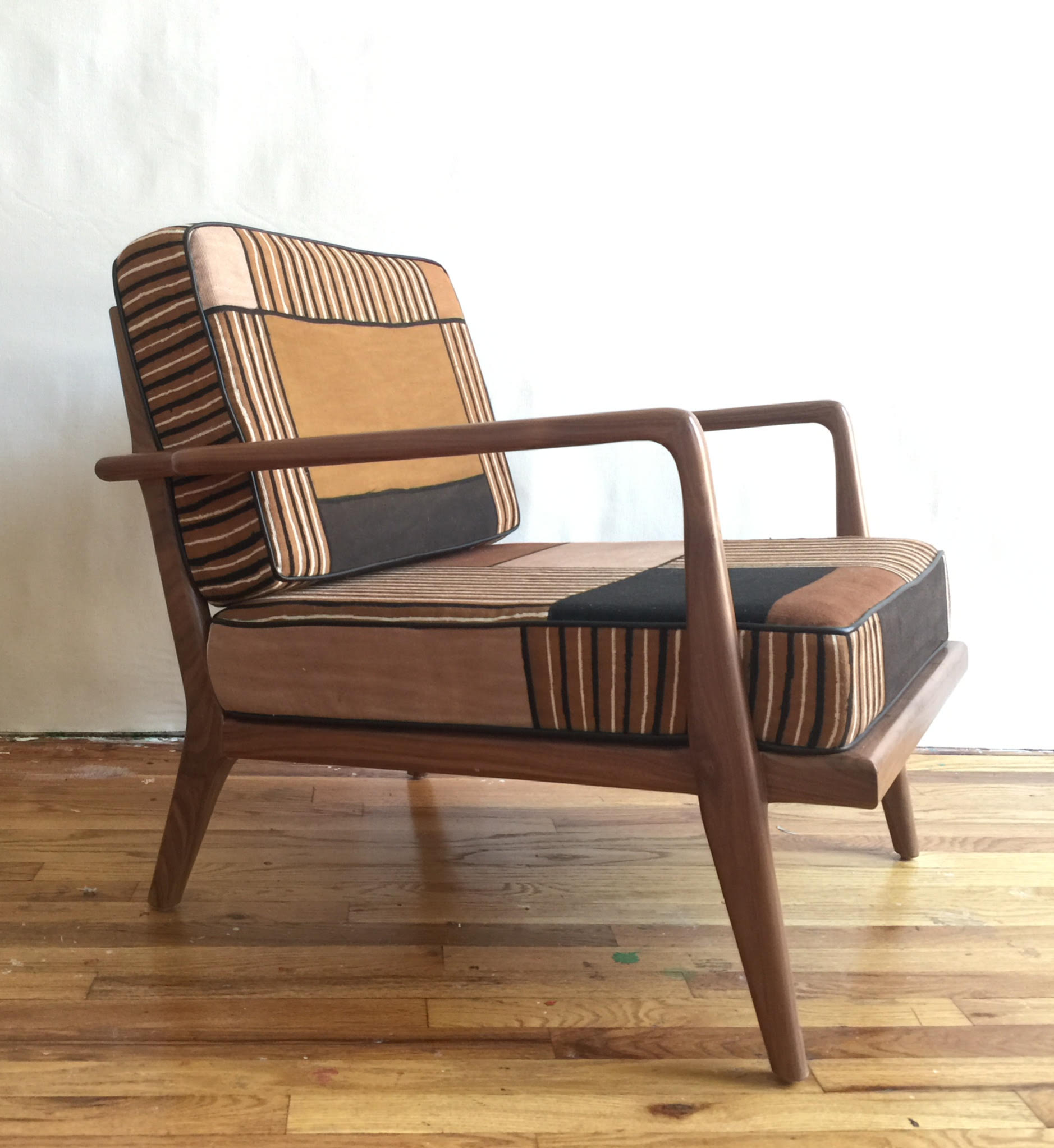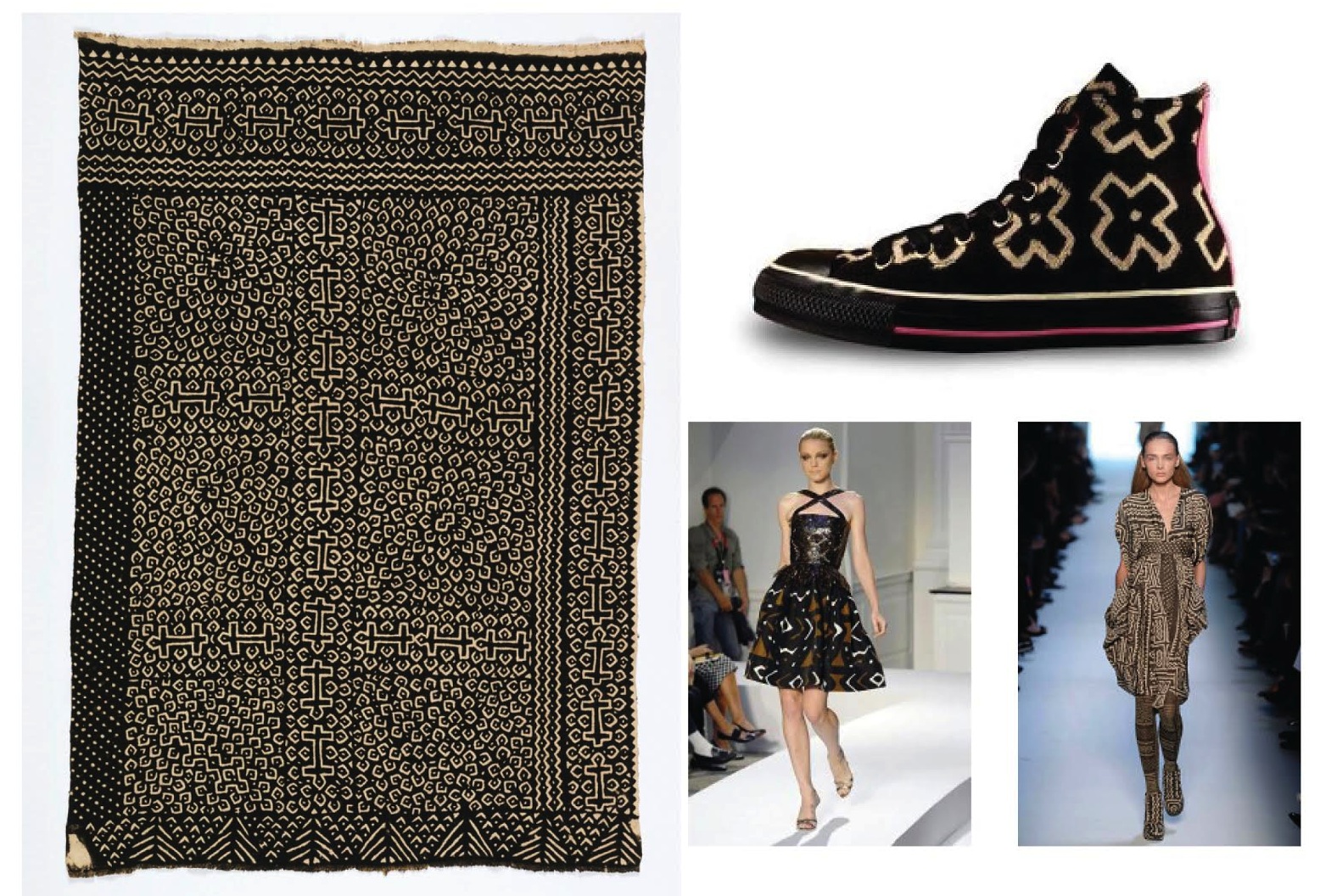Smilow Furniture Collaborates with Rubia & Ndomo on Mud Cloth Upholstered Chair
Rubia Inc, a non-profit which promotes women’s empowerment through education and income generation from the sale of their heritage handwork in Mali and Afghanistan, approached Smilow Design with a wonderful project in connection with the work they are doing in Mali with textile designers at Le Ndomo. Rubia describes the collaboration on their facebook page: "Drawn to the legacy of Smilow Furniture’s “enduring modern classics, ” Rubia imagined a partnership between Smilow Design, Ndomo and Rubia. The result: this unique bogolan upholstered chair blending the handwork of our American and Malian ancestors."

The project: use mud cloths designed by Ndomo deigners in Mali to cover the cushions of a Smilow Furniture Rail Back Chair. The results turned out beautifully -- timeless, traditional designs together in perfect harmony.
Rubia admires the vision of Ndomo’s Founder and Director, Boubacar Doumbia, who created the textile used on the chair. Doumbia has an innovative social enterprise in Segou integrating education, empowerment and cultural heritage preservation. They empower unemployed youth while preserving Mali’s cultural heritage.
Youth who haven’t had the chance to go to school learn marketable skills to create exquisite indigo, basilan and bogolan textiles. Ndomo defines itself as “more like an African family than an employer employee relationship, in which all members act individually and collectively for their livelihood.”
Bogolanfini is a traditional textile made by the Bambara (Bamanan) people who live by the Niger River. In Bamanan, bogolanfini means literally “cloth with mud” when broken down into its three parts: bogo means mud, lan means with, and fini means cloth. Bogolan (mudcloth) artisans who had sold their textiles to tourists are struggling to survive after a precipitous drop in tourists.
Mud Cloth has been inspiring designers of all kinds lately. The textiles were featured as a Cooper Hewitt Object of the Day in an article called Magic Mud. Converse designed a popular shoe in the fabric and the textiles have even been appearing on fashion runways in collections by Givenchy and Oscar de la Renta. Mud cloths are now on view in the exhibition David Adjaye Selects: Works from the Permanent Collection, along with thirteen other pieces from the museum’s African textile collection.

And this just out from David Adjaye's recent collection for KnollTextiles. Djenne upholstery on Saarinen stools with Kumasi drapery behind it.
Susan Brown, the Associate Curator in the Textiles Department at Cooper Hewitt, Smithsonian Design Museum, elaborated on the history of the cloth.
… “mud cloth” scarcely does justice to the mastery of chemistry needed for the multi-step production of these dyed cloths. The deep brown color is created using iron-rich mud, fermented for over a year. But the fabric must be pre-treated before to allow the mud to function as a dye, and the motifs bleached afterward to restore their whiteness.
Traditionally worn by hunters as a form of camouflage, mud cloth has become a popular export item as well as a symbol of Malian national pride.”
For information about how to acquire this special chair as a charitable donation to help further Rubia ’s great work contact us or Catherine Rielly Executive Director of Rubia Inc at c.rielly@rubiahandwork.org.

